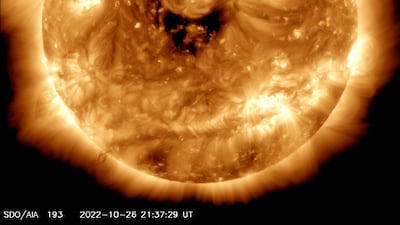Nasa satellites have captured some intriguing images over the years.
However, the latest from US the space agency is one of its cutest, with a photo seemingly showing the Sun with a friendly smile on its face.
On Wednesday, Nasa tweeted that it’s Solar Dynamics Observatory had “caught the Sun ‘smiling.’ Seen in ultraviolent light, these dark patches on the Sun are known as coronal holes and are regions where fast solar winds gushes out into space.”
The tweet has been liked more than 14,900 times.
Since the image has been uploaded, social media users have taken the platform to share their responses to it. One user tweeted the Teletubbies sun baby as a response, with another replying: “Was searching the comments for this image.”
Meanwhile one user said it looked like a “Jack-o-latern in reverse” while another compared it to a smiley face emoji with its mouth open. Another user said the photo just made their day. Someone also compared the image to a mini BN biscuit:
Some also took to social media to share their photo edits, with one user added a basketball cap and peace signs, to give it a sleek makeover:
Another turned it into a pumpkin, just in time for Halloween:
One user showed off their impressive artistic skills by turning it into a lion:
While another edited it back into the Teletubbies show:
In other good news, Nasa announced earlier this week that the hole in the ozone layer continues to shrink.
"This depleted area of the ozone layer over the South Pole was slightly smaller than last year and generally continued the overall shrinking trend of recent years," the space agency said.
Ozone is a natural molecule made up of three oxygen atoms mostly found high above the Earth, where it acts as a shield against radiation and from the sun's ultraviolet rays.
The causes of the hole were effectively tackled as a result of international co-operation known as the Montreal Protocol, an agreement struck in 1987.


